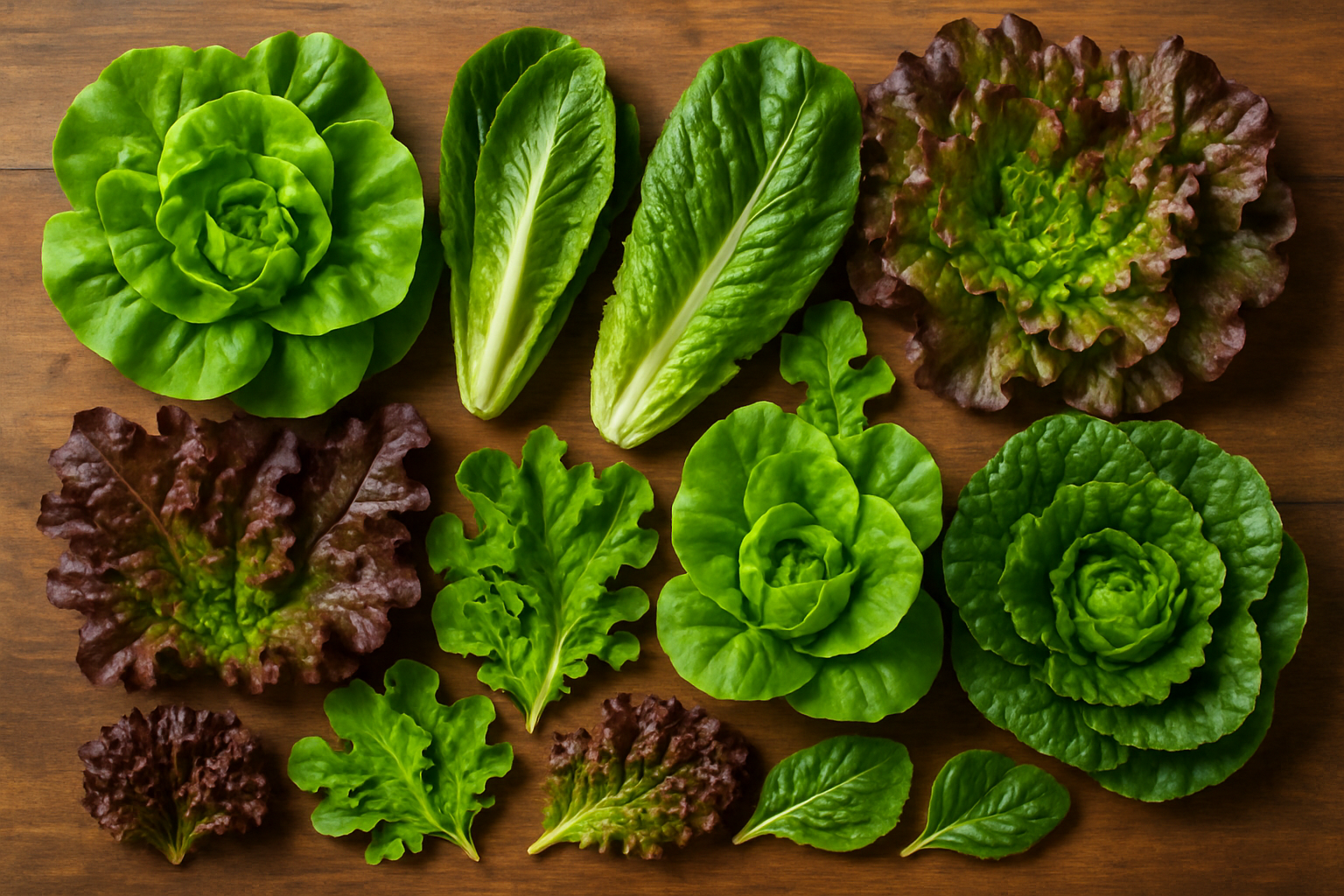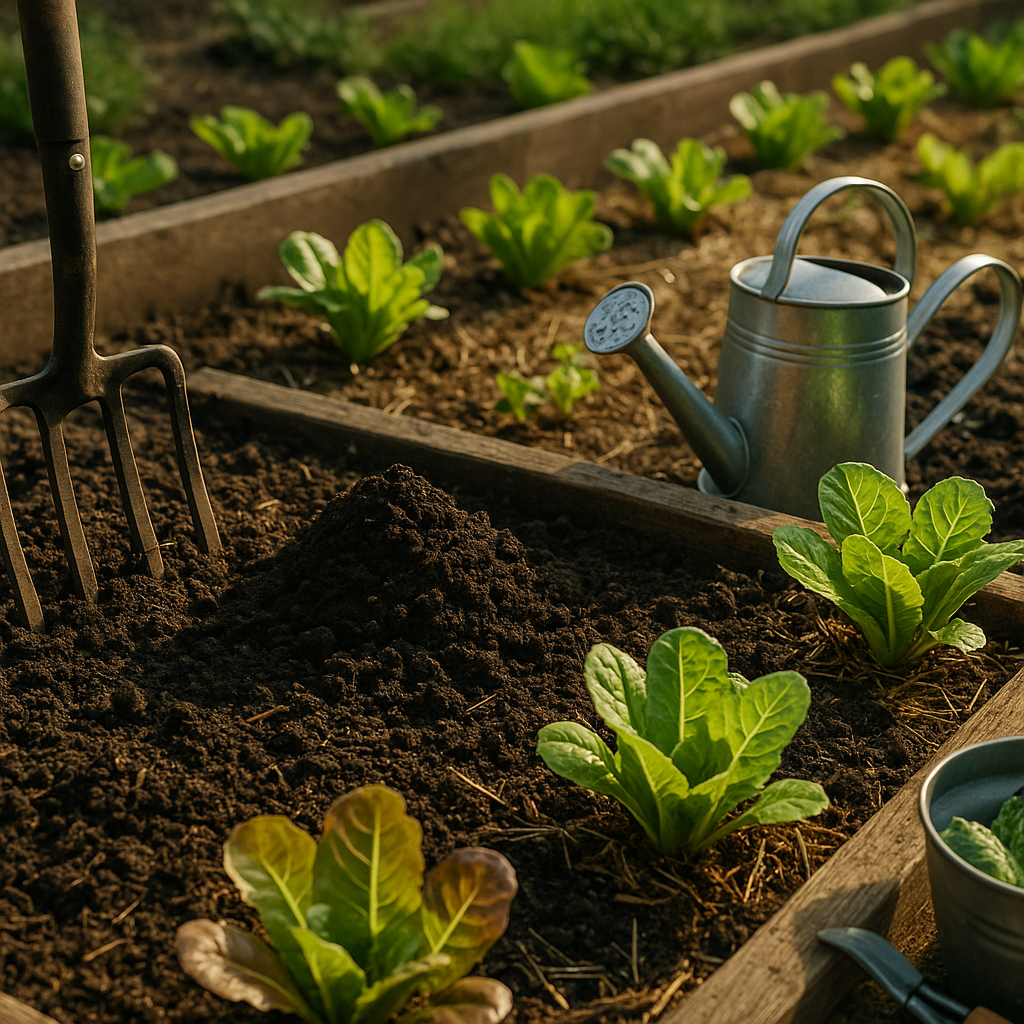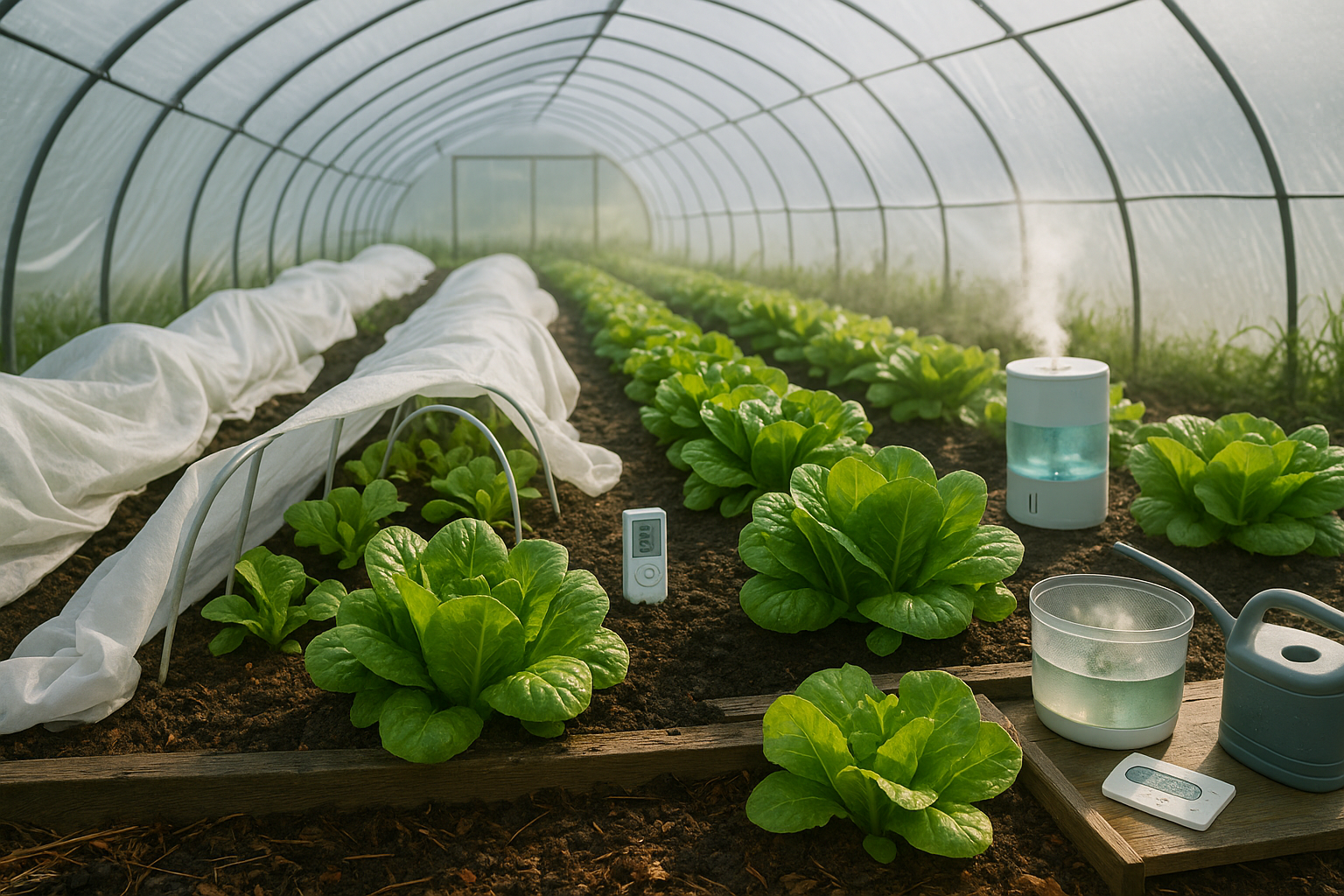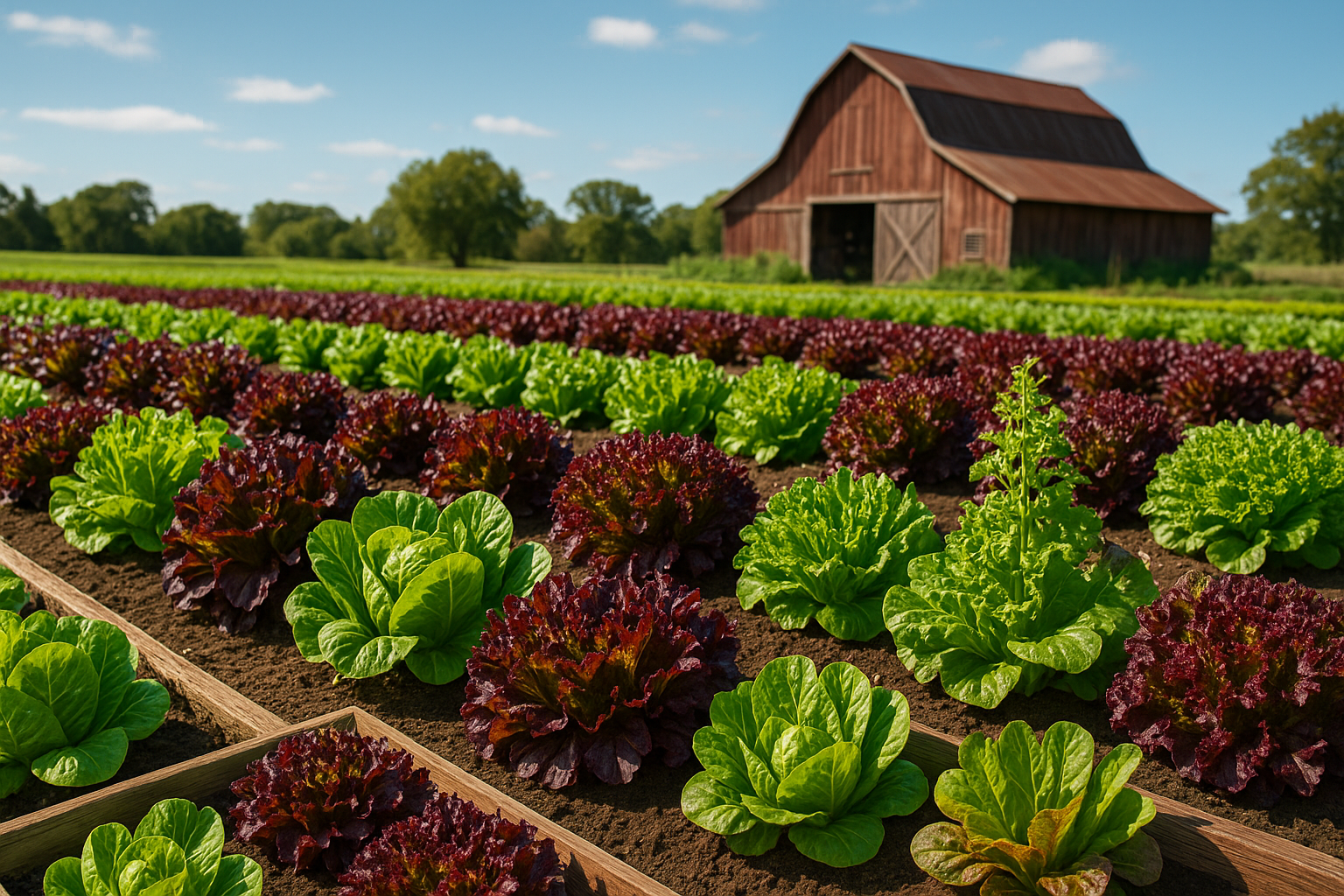Introduction
Specialty lettuce farming has quickly become a favorite among farm-to-table restaurants and local markets, thanks to growing consumer demand for unique flavors and premium freshness. If you’ve noticed chefs raving about baby gem, oak leaf, or frilly-edged red varieties, you’re not alone—specialty lettuce isn’t just visually stunning; it also commands higher prices and enjoys rapid turnover when grown locally.
Whether you’re looking to diversify your crop lineup or tap into a more profitable niche, cultivating these lettuces offers clear advantages: vibrant choices for buyers, ultra-fresh harvests, and steady market demand. In this article, we’ll guide you through essential growing techniques, variety selection for maximum appeal, practical strategies for extending your season, and insider tips on marketing your greens to retailers and chefs.
Ready to make your farm stand out? Let’s dig into the steps that will help you succeed with specialty lettuce farming.
Choosing the Right Lettuce Varieties

When selecting lettuce varieties for restaurant or market sales, understanding the strengths and characteristics of each type is key to satisfying customer preferences and securing steady demand. Butterhead lettuces, like Bibb and Boston, are prized for their delicate, tender leaves and mild, sweet flavor—perfect for upscale salads or lettuce wraps. Romaine offers a crisp texture and a slightly bitter edge, making it a top pick for Caesar salads or hearty sandwiches; its upright growth and sturdy ribs also make it durable during harvest and transport.
Oak leaf lettuces—available in striking green or red—stand out for their deeply lobed leaves, gently sweet taste, and stunning plate appeal, easily elevating salad mixes with visual variety. Batavia, sometimes called French crisp, bridges the gap between crunchy romaine and soft butterhead, offering thicker leaves that hold up well in transport and storage, making them ideal for CSA boxes or catering needs.
For chefs and market growers, choosing the right variety means balancing taste and texture with appearance, durability, and shelf life. Lettuce that bruises easily or wilts quickly may not make it past display or through a busy dinner service. Look for varieties bred for disease resistance—particularly against downy mildew and tip burn—to reduce crop losses and limit the need for chemical treatments.
Fast-growing cultivars can shave days off your harvest schedule, which is crucial for maintaining a continuous supply. Consider sowing heat-tolerant varieties like summer crisp or Batavia during the warmer months, while favoring butterheads or romaine for cool-season production. Succession planting different varieties adapted to their optimal season ensures a steady, diverse harvest, catering to both restaurant and market demand year-round.
By carefully matching lettuce types to climate, market niche, and handling needs, you can keep your greens in high demand and your customers coming back for more.
Optimizing Growing Conditions and Soil Preparation

Specialty lettuce thrives when you pay close attention to its growing environment, starting with light, temperature, and soil. Lettuce prefers full sun—about 6 hours a day—although in very hot climates, some afternoon shade helps prevent bolting, which is when the plant rushes to flower and the leaves turn bitter. Keep temperatures cool and consistent, ideally between 60–70°F (15–21°C), especially during germination and early growth.
Soil quality makes all the difference. Aim for loose, well-draining soil high in organic matter, with a pH between 6.0 and 6.8. Rich compost or well-rotted manure boosts fertility, giving lettuce the nutrients it needs for lush, flavorful leaves. Good drainage prevents waterlogging, which causes root rot—a quick way to lose a crop. Organic matter not only feeds the plants but also improves soil structure for better moisture retention.
For optimal results, prepare your beds ahead of planting by removing weeds, loosening the top 6–8 inches of soil, and mixing in compost. Raised beds provide excellent drainage, but if you prefer a sustainable approach, try a no-till method: simply layer compost or aged manure on top of your soil and let earthworms and microorganisms do the work of incorporating it over time. This method preserves soil structure and life, leading to healthier plants in the long run.
Lettuce has shallow roots, so aim for frequent, light watering to keep the top inch of soil consistently moist but never soggy. Drip irrigation or soaker hoses work well and help avoid leaf diseases. During hot spells, mulch with straw or leaves to hold in moisture and keep the soil cool, or water early in the day to reduce heat stress. These attentive practices ensure specialty lettuce stays tender, crisp, and full of delicate flavor all season long.
Sowing, Transplanting, and Crop Scheduling
When it comes to efficient lettuce production, growers often weigh the pros and cons of direct sowing versus transplanting. Direct sowing involves planting seeds directly into the garden soil, making it a quick, low-labor option suited to larger plots or when targeting early crops. This approach minimizes root disturbance, resulting in healthier plants, but can be tricky if the weather is unpredictable or if soil conditions are less than ideal.
On the other hand, transplanting starts seeds indoors or in protected trays, then moves established seedlings into the garden. Though this requires more time and upfront effort, it allows better control over germination conditions, reduces weed competition, and shortens the time plants spend exposed to unpredictable outdoor elements.
For lettuce, proper germination is key—seeds sprout best at soil temperatures between 15°C to 22°C (59°F to 72°F), usually emerging within 7 to 10 days. Starting seeds indoors about four weeks before the last expected frost ensures strong seedlings for transplanting.
To ensure a consistent harvest and maximize yields, planning a detailed planting schedule is essential. Note the average days-to-maturity for your chosen variety (usually 45–60 days) and stagger new seed sowings or transplants every 10–14 days. This staggered approach, called succession planting, is an effective technique to avoid overwhelming gluts or frustrating supply gaps.
For example, a home gardener can start a new tray of lettuce seedlings each week, so while one set is being harvested, the next is nearly ready—keeping salads on the table all season. By recording planting and harvest dates in a simple garden journal or spreadsheet, you can refine your schedule over time, taking into account weather shifts or crop performance, and enjoy a steady supply of crisp, homegrown lettuce.
Season Extension Strategies for Year-Round Harvest

Successfully extending your lettuce harvest throughout the year is achievable with a few smart season extension strategies tailored to your region’s unique climate challenges. Hoophouses and greenhouses provide robust solutions by trapping solar warmth and creating a protected microclimate, allowing you to maintain a steady lettuce supply even during harsh winter months.
For smaller setups, row covers and low tunnels—made from lightweight fabric draped over hoops—shield plants from frost and chilly winds while letting sunlight filter through. Cold frames, essentially mini greenhouses made from old windows or clear plastic lids atop wooden frames, are ideal for urban growers or anyone with limited garden space.
It’s important to match your method to your weather: in milder climates, floating row covers might suffice, while in colder zones, layering protection (such as a row cover beneath a low tunnel) can safeguard your lettuce from deep freezes.
Managing temperature is crucial in these protected environments; ventilate on sunny winter days to prevent overheating and mold, but close covers in the late afternoon to retain warmth overnight. Humidity control is just as vital—overly damp conditions can encourage rot, so water early in the day and ensure good airflow.
For restaurant clients demanding year-round greens, sow heat-tolerant varieties in late summer for fall harvests and cold-hardy types for overwintering. Stagger plantings every two weeks to ensure a continuous harvest, and try growing compact leaf lettuces, which mature quickly and thrive under protection.
With these tools and timely care, even small-scale growers can reliably supply crisp, flavorful lettuce to restaurants from early spring through winter, turning seasonal limits into new business opportunities.
Preventing Bolting and Other Growing Challenges
Bolting, or premature flowering, is a common headache for lettuce growers, especially during hot weather or long daylight periods. This process is triggered by stressors like high temperatures, inconsistent watering, and crowded planting, which push the plant to flower and produce seeds rather than tender leaves.
To prevent bolting, select slow-bolt or heat-tolerant lettuce varieties, plant early in spring or late summer, and use shade cloth to shield crops from midday heat. Consistent moisture is key—water regularly to keep soil evenly damp, mulch to retain soil coolness, and avoid disturbing roots when weeding.
Dealing with Pests and Diseases
Specialty lettuce also attracts pests like aphids, slugs, and leaf miners, while downy mildew and bottom rot are common diseases. Combat these sustainably by encouraging beneficial insects, using row covers, and implementing crop rotation to disrupt disease cycles. Homemade remedies like neem oil or insecticidal soap help control infestations without harsh chemicals.
Harvesting Tips
To deliver market-ready lettuce, harvest at the right size, trim damaged leaves promptly, and handle heads gently to limit bruising. Using clean, sharp knives reduces stress on plants and keeps cut leaves clean.
Monitoring and Recovery
Monitor beds daily for early signs of stress, pests, or disease, such as yellow spots or distorted leaves, and act fast—removing affected plants, adjusting watering, or applying natural controls as soon as issues arise. After setbacks like heat waves or pest outbreaks, prioritize plant recovery with deep, even watering and supplement with organic liquid feeds, helping lettuce bounce back strong and uniform for harvest.
Harvesting, Handling, and Selling to Restaurants/Markets
To get the best flavor, maximum freshness, and longer shelf life from your lettuce, harvest early in the cool morning when the leaves are crisp and turgid. Use clean, sharp knives or scissors to avoid bruising, and handle heads gently to prevent damage.
After harvesting, rinse the lettuce in cold, potable water to remove dirt and field heat—multiple quick dips work well—then let the leaves drain completely. Package immediately in clean, food-grade bags or clamshells, and store at 32–36°F with high humidity to keep them perky and reduce wilting.
When selling to restaurants or markets, reach out directly to chefs or produce managers. Drop off a fresh sampler of unique varieties like butterhead or red oak leaf, along with simple recipe cards to spark interest. Build trust by delivering consistently high-quality lettuce and responding promptly to feedback or requests.
For markets, label your products clearly and share the story behind your farm—customers love knowing where their food comes from. Keep careful records of yields, sales, and customer preferences; a simple notebook or digital spreadsheet works fine.
Ask chefs and shoppers what they like best and what they’d love to see next season—this helps you refine your crop selection and stand out year after year.
Conclusion and Next Steps
Growing specialty lettuce for local markets offers a fresh way to stand out, from choosing unique varieties to mastering efficient planting and direct sales. The biggest advantages include premium pricing, loyal customers, and strong community ties.
As you gain experience, keep experimenting with new lettuce types and growing techniques—this not only keeps your offerings exciting but also helps you meet changing customer tastes. Stay connected by exploring resources like Johnny’s Selected Seeds, Seed Savers Exchange, and online tools for local market research.
Continuous learning and adaptation are key to thriving in this dynamic, rewarding niche.
